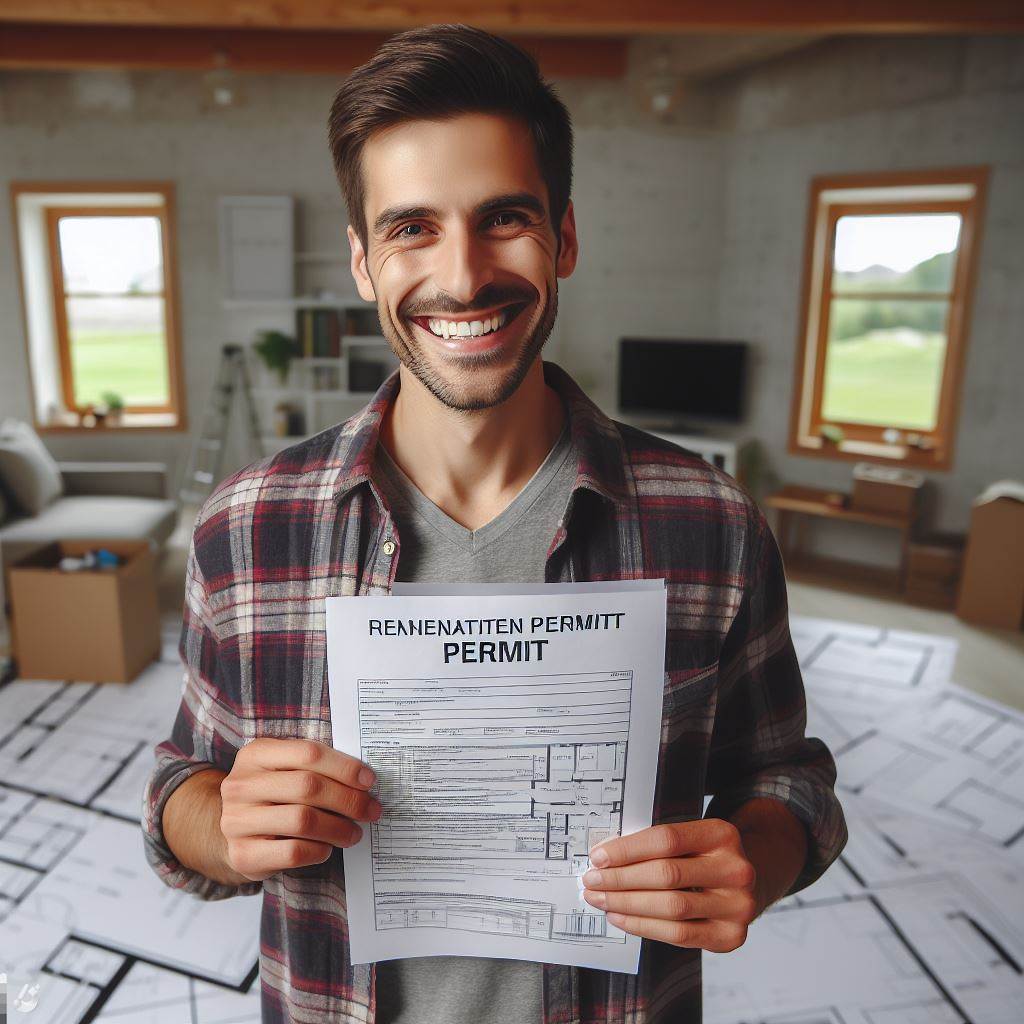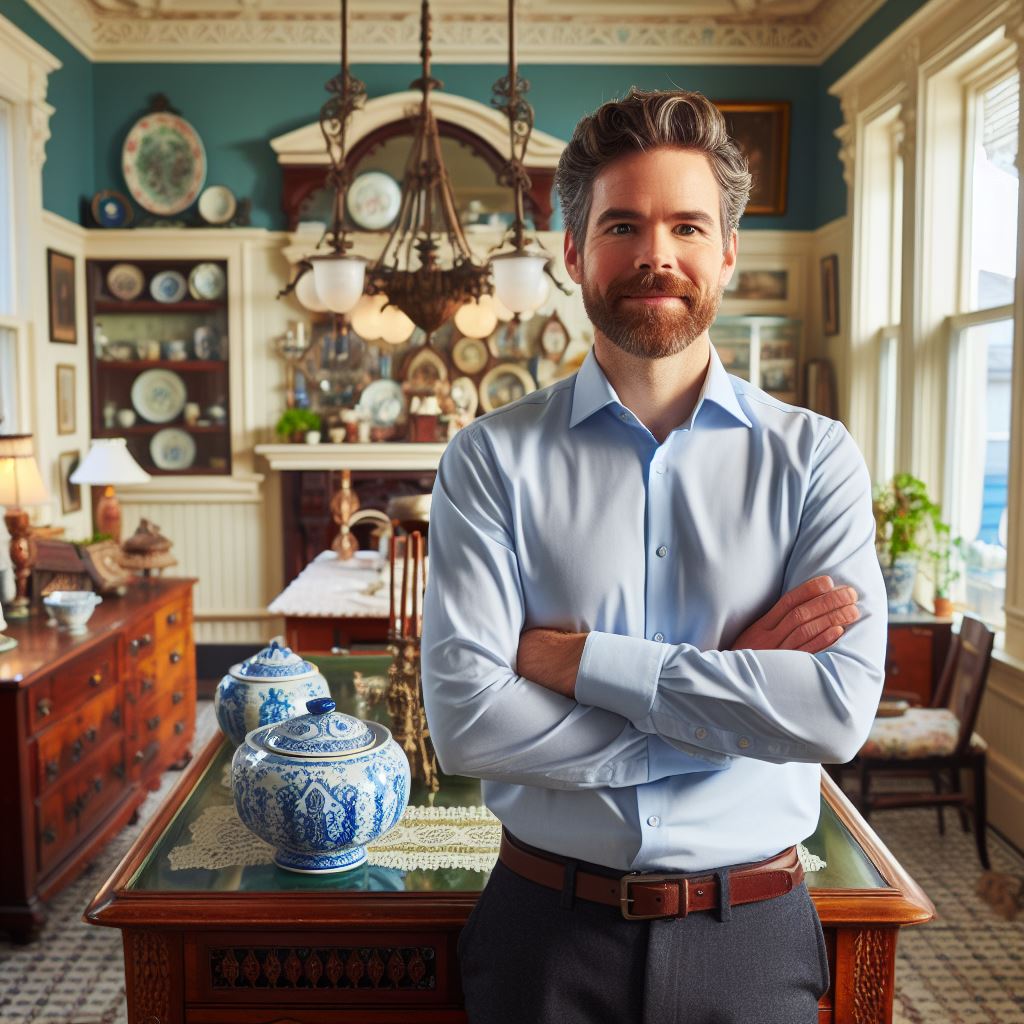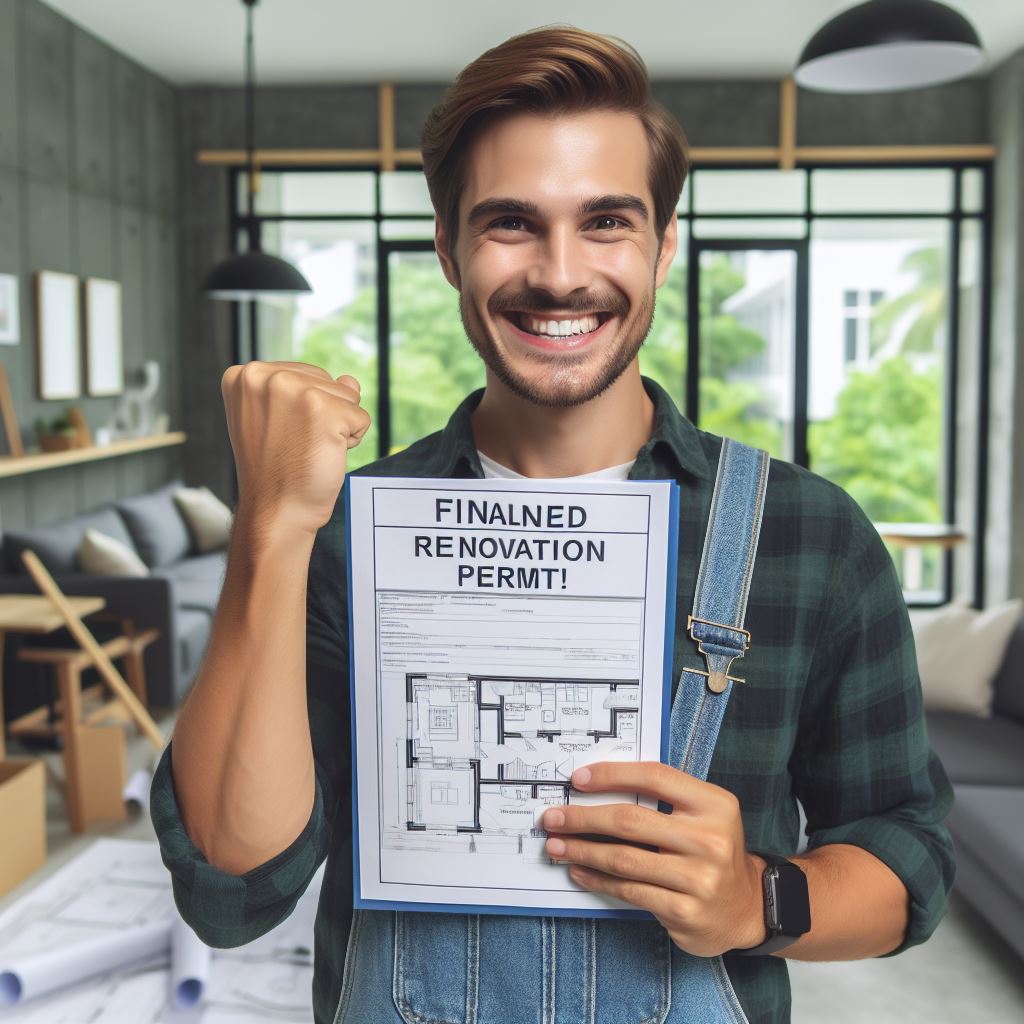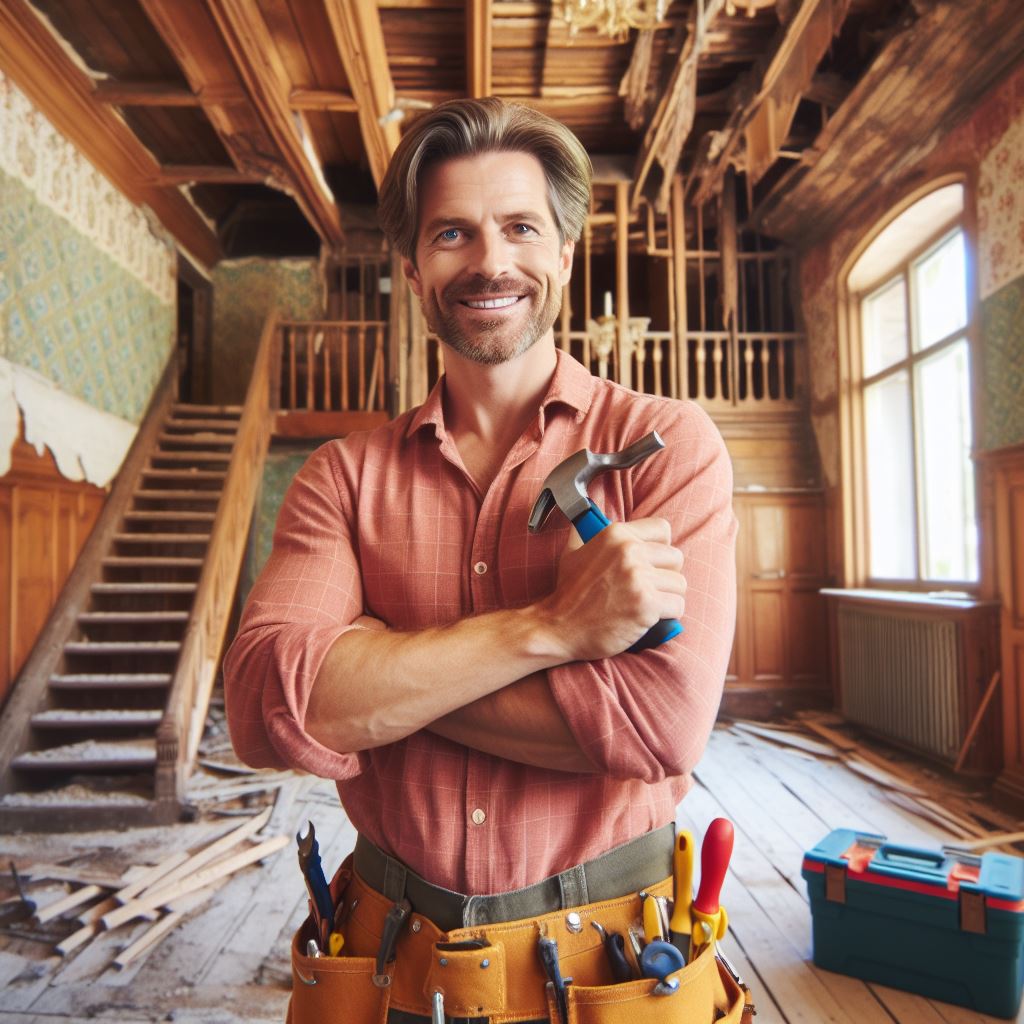Introduction
Vintage homes have a charm that is hard to find in newer houses.
They often have intricate designs and architectural details that reflect a different era.
These homes have a historical significance, telling stories of the past and providing a glimpse into our cultural heritage.
However, vintage homes may not meet the needs and expectations of modern homeowners.
They may lack modern amenities and features that make daily living more convenient and comfortable.
By modernizing these homes, we can retain their historical charm while incorporating contemporary elements that cater to our present lifestyle.
Modernizing a vintage home involves a careful balance between preserving its original character and adding modern updates.
Renovations can include updating the electrical and plumbing systems, installing energy-efficient appliances, and redesigning the layout to create more functional spaces.
Additionally, incorporating modern design elements like open floor plans and smart home technology can bring a vintage home into the 21st century.
The importance of modernizing vintage homes extends beyond satisfying our desire for modern amenities.
By preserving these homes and adapting them for modern living, we are contributing to the conservation of our cultural heritage.
Vintage homes are a link between the past and present, and by modernizing them, we ensure their longevity for future generations to appreciate.
In this guide, we will explore various techniques and considerations for modernizing vintage homes, emphasizing the importance of preserving their unique charm while incorporating modern elements.
Whether you are looking to update your own vintage home or considering purchasing one, this guide will provide valuable insights and inspiration for your modernization journey.
Assessing the Vintage Home
A vintage home has its own charm and character, but it often requires modernization to meet contemporary standards.
Before embarking on this journey, it is crucial to assess the structure, condition, and specific areas that need improvement.
Additionally, budgeting plays a key role in ensuring the feasibility of the modernization process.
Evaluating the structure and condition of the home
- Start by conducting a thorough inspection of the vintage home, paying close attention to its foundation, walls, and roof.
- Look for signs of potential structural issues such as cracks, sagging, or water damage that may require professional intervention or consultation.
- Assess the electrical and plumbing systems to determine if they need upgrading to meet modern safety and efficiency standards.
- Consider hiring a home inspector or structural engineer to provide an expert evaluation of the vintage home’s overall condition and identify any underlying problems.
Key areas in need of modernization
- Evaluate each room individually, paying attention to outdated features, inefficient use of space, or functional limitations.
- Make a list of areas that require modernization, such as kitchen, bathrooms, flooring, windows, and doors.
- Prioritize the areas based on their significance and your personal preferences, keeping in mind factors like functionality, aesthetics, and potential return on investment.
- Consider consulting with interior designers or architects to get expert opinions on the areas that would benefit most from modernization.
Budgeting for the modernization process
- Determine your overall budget for the modernization project, including both material costs and labor expenses.
- Research the average costs of similar modernization projects and adjust your budget accordingly.
- Allocate funds for unexpected expenses and contingency plans to avoid financial strain during the process.
- Obtain multiple quotes from contractors or professionals for a more accurate estimation of the costs involved.
- Consider alternative options such as DIY projects or salvaging and repurposing vintage materials to reduce expenses without compromising quality.
- Create a detailed budget breakdown, allocating specific amounts to each area of modernization based on priority.
- Regularly review and update the budget throughout the modernization process to track expenses and make necessary adjustments.
Assessing the vintage home is a crucial first step in the modernization journey.
By evaluating its structure, identifying key areas in need of improvement, and budgeting wisely, you can set a solid foundation for a successful modernization process.
Remember, patience and thorough planning are key to achieving a harmonious blend of vintage charm and modern functionality.
Read: Decoding Building Codes: A Beginner’s Guide
Planning the Modernization
A successful vintage home modernization starts with careful planning. Here are four essential steps to consider:
Determining the desired outcome
Before embarking on your vintage home modernization project, it’s important to have a clear vision of what you want to achieve.
Take the time to identify your goals and determine the desired outcome.
Do you want to preserve the home’s historical integrity while adding modern amenities? Or are you looking to completely transform the space into a contemporary masterpiece? Understanding your desired outcome will guide your decision-making process throughout the project.
Researching the historical significance of the home
Researching the historical significance of your vintage home is an essential step in the modernization process.
Understanding the architectural style, period, and any notable historical events associated with the home will provide valuable insights.
By learning about the home’s history, you can make informed decisions regarding which aspects to preserve and restore.
This research will also help you determine if there are any restrictions or regulations you need to comply with during the modernization process.
Consulting experts and architects for guidance
When it comes to modernizing a vintage home, seeking guidance from experts and architects is highly recommended.
These professionals have the knowledge and experience to help you navigate the complexities of the project.
Consulting with experts will allow you to leverage their expertise in preservation and renovation techniques.
They can provide insights on how to balance modern elements with the home’s historical integrity, ensuring a harmonious outcome.
Creating a timeline for the modernization project
A well-planned vintage home modernization project requires a carefully crafted timeline.
Creating a timeline will help you stay organized, prioritize tasks, and track progress throughout the process.
Start by breaking down the project into smaller, manageable phases.
Assign timeframes to each phase, considering factors such as availability of materials, permits, and the extent of renovations.
Be realistic and allow for unexpected delays.
Remember to consider any specific milestones or events that may impact the project’s timeline, such as holidays or special occasions.
Having a clear timeline will help you stay on track and ensure a smooth modernization process.
In short, planning is a crucial step in the modernization of a vintage home.
Determining the desired outcome, researching the historical significance, consulting experts, and creating a timeline will set the foundation for a successful project.
By carefully considering each of these steps, you’ll be well-prepared to embark on your vintage home modernization journey and transform your beloved historic property into a modern oasis that retains its unique charm.
Read: Navigating Permits for Historic Buildings
Choosing Modernization Tactics
Preserving the vintage elements while updating functionality
Preserving vintage elements is crucial to maintaining the overall charm of a vintage home.
By updating functionality, homeowners can enjoy the benefits of modern amenities without sacrificing the vintage feel.
To achieve this, one can consider retaining original architectural details such as doors, trim, or even windows while adding modern upgrades discreetly.
Incorporating hidden modern features like built-in charging stations or clever storage solutions can help maintain the home’s vintage character.
Upgrading electrical systems and plumbing
One key aspect of modernizing a vintage home is upgrading the electrical systems and plumbing.
Outdated electrical systems and plumbing can be a safety hazard and cause inconvenience.
Hiring a licensed electrician and plumber is essential to ensure that the upgrades are done correctly and up to code.
Updating electrical outlets, wiring, and plumbing fixtures not only improves functionality but also increases the home’s value.
Improving energy efficiency
Improving energy efficiency in a vintage home is important for both environmental and financial reasons.
Upgrading insulation, sealing air leaks, and installing energy-efficient windows can help reduce energy consumption.
Replacing old appliances with energy-efficient ones and considering solar panels are also effective ways to make a vintage home more energy-efficient.
These improvements not only save money on utility bills but also reduce the home’s carbon footprint.
Selecting appropriate materials and finishes
Choosing the right materials and finishes is crucial when updating a vintage home.
Opting for high-quality materials that mimic the original ones can help maintain the home’s historic integrity.
For example, using reclaimed wood for flooring or vintage-style tiles for the bathroom can enhance the vintage aesthetic.
Additionally, selecting appropriate finishes like period-appropriate light fixtures or hardware can further enhance the overall look and feel of the home.
In summary, when modernizing a vintage home, it is important to strike a balance between preserving its unique character and upgrading its functionality.
By carefully retaining vintage elements while incorporating modern upgrades discreetly, homeowners can maintain the charm of their vintage home.
Upgrading electrical systems and plumbing is essential for safety and convenience.
Improving energy efficiency is not only environmentally friendly but also cost-effective.
Lastly, selecting appropriate materials and finishes ensures that the home retains its historic integrity while adopting modern comfort.
Read: Art Deco Influence in 2024 Real Estate

Interior Modernization
Updating the kitchen and bathroom
- Replace outdated appliances and fixtures to give the kitchen a modern and fresh look.
- Consider installing energy-efficient appliances to save on utility bills.
- Upgrade the countertops and backsplash for a sleek and contemporary feel.
- Update the bathroom fixtures including the sink, shower, and toilet for a more modern aesthetic.
- Add storage solutions such as cabinets or shelves to keep the kitchen and bathroom organized and clutter-free.
- Consider repainting the walls with light and neutral colors to create a bright and inviting atmosphere.
Enhancing the living spaces with modern amenities
- Add a home theater system with surround sound for an immersive entertainment experience.
- Install a central heating and cooling system for optimal temperature control throughout the house.
- Include a home office space with a comfortable desk and ergonomic chair for remote work or studying.
- Create a cozy reading nook or library area with built-in bookshelves and comfortable seating.
- Integrate smart lighting solutions with dimmers and automated controls for convenience and energy savings.
Utilizing smart home technology
- Install a smart thermostat to regulate the temperature and save on energy costs.
- Integrate a home security system with surveillance cameras, motion sensors, and remote monitoring capabilities.
- Control lighting, appliances, and devices through a centralized smart home hub or smartphone app.
- Automate window treatments to adjust natural light levels and improve energy efficiency.
- Use voice-controlled virtual assistants like Amazon Echo or Google Home for hands-free control of various functions.
Reviving vintage architectural features
- Restore original hardwood floors by refinishing or repairing any damaged areas.
- Expose and restore brick walls or fireplaces to add character and charm to the living spaces.
- Replicate or replace vintage moldings and trims to match the original style of the house.
- Preserve and refurbish vintage windows for a nostalgic touch while improving energy efficiency.
- Recreate or restore vintage cabinetry and built-ins to maintain the integrity of the home’s original design.
Basically, interior modernization of a vintage home involves updating the kitchen and bathroom, enhancing living spaces with modern amenities, utilizing smart home technology, and reviving vintage architectural features.
By carefully considering these aspects and incorporating them into the design, a vintage home can be transformed into a stylish and functional modern living space while still preserving its unique charm.
Read: Window Trends: 2024’s Clear Views
Exterior Modernization
Enhancing curb appeal while preserving the home’s character
- Add a fresh coat of paint in a vintage color scheme to the exterior.
- Install traditional details like shutters, trim, or decorative moldings.
- Enhance the front entrance with a vintage-style door and porch details.
- Display antique outdoor light fixtures or lanterns to add charm.
Repairing and upgrading the roof, windows, and doors
- Inspect and repair any damages or leaks in the roof to ensure its longevity.
- Upgrade windows to energy-efficient alternatives while maintaining the vintage look.
- Refurbish or replace old, worn-out doors with period-appropriate options.
- Install window shutters to add both functionality and authenticity.
Landscaping to complement the vintage style
- Design a front yard that reflects the era of the home, using vintage plants.
- Incorporate hardscaping elements like brick pathways or stone walls.
- Frame the house with traditional picket fences or wrought-iron gates.
- Plant climbing vines or roses for a romantic and timeless touch.
- Add vintage-style outdoor furniture or decor to complete the nostalgic atmosphere.
All in all, exterior modernization for a vintage home requires careful attention to detail and a goal of preserving its original character.
By enhancing curb appeal, repairing and upgrading key elements, and completing the look with appropriate landscaping, homeowners can achieve a harmonious blend of vintage charm and modern functionality.
Challenges and Considerations
When embarking on the journey of modernizing a vintage home, several challenges and considerations must be addressed to ensure a seamless transformation that respects the property’s historical charm.
In this section, we explore three key aspects: dealing with potential structural issues, ensuring compliance with building codes and regulations, and navigating through historical preservation restrictions.
Dealing with Potential Structural Issues
One of the foremost challenges in modernizing a vintage home is confronting potential structural issues that may have developed over the years.
Aging foundations, deteriorating support beams, or hidden water damage can compromise the integrity of the structure.
Before diving into aesthetic upgrades, it is crucial to conduct a comprehensive structural assessment.
Hiring a qualified structural engineer can help identify and address any underlying issues, laying a solid foundation for the modernization process.
Ensuring Compliance with Building Codes and Regulations
Adhering to current building codes and regulations is paramount when modernizing a vintage home.
Local authorities may have updated requirements that differ from the original construction standards of the property.
This necessitates careful planning and coordination with local building departments.
Engaging a knowledgeable architect or contractor with experience in historical renovations can facilitate a smooth integration of modern amenities while meeting contemporary regulatory standards.
Navigating Through Historical Preservation Restrictions
Vintage homes often fall under historical preservation restrictions, designed to safeguard the architectural and cultural significance of the property.
While these restrictions honor the past, they can present challenges for modernization projects.
Collaborating with preservation specialists and obtaining necessary approvals is essential to strike a balance between preserving the home’s historical character and introducing modern elements.
This may involve using specific materials, maintaining certain architectural features, or obtaining permits for alterations.
In navigating these challenges, meticulous planning, professional expertise, and a deep respect for the property’s history are essential.
Successfully addressing these considerations ensures that the vintage home modernization project not only stands the test of time but also honors the unique narrative woven into its walls.
Budgeting and Financing
Estimating the overall cost of modernization
To successfully modernize a vintage home, it is crucial to have a clear understanding of the overall cost involved.
By estimating the expenses, you can plan your budget effectively and avoid any financial surprises along the way.
Here are some key factors to consider when estimating the overall cost:
- Property assessment: Hire a professional inspector to assess the condition of your vintage home. They will identify any structural issues, electrical or plumbing problems, and other necessary repairs.
- Labor costs: Determine whether you will hire contractors or do the renovations yourself. Get quotes from different professionals to compare prices and choose the most affordable and reliable option.
- Materials and supplies: Research and list down the materials and supplies required for the modernization process. Consider the quality, aesthetics, and durability of each item to ensure they align with your budget and vision.
- Permits and fees: Check with your local authorities about the permits necessary for the renovations. Factor in the costs associated with obtaining these permits, as well as any inspection fees that might be required throughout the process.
- Contingency fund: Set aside a contingency fund of around 10-20% of your estimated budget. This extra money will act as a buffer in case of unexpected expenses or changes in plans during the modernization journey.
Financing options for vintage home renovations
Once you have estimated the overall cost, it’s time to explore financing options for your vintage home renovations.
Here are a few options to consider:
- Home equity loans or lines of credit: If you have sufficient equity in your vintage home, you can borrow against it to fund your modernization project. These options typically offer lower interest rates compared to personal loans.
- Personal loans: If you don’t have substantial equity in your home, you can consider applying for personal loans from banks or credit unions. However, keep in mind that the interest rates may be higher than those for home equity loans.
- Government assistance programs: Research government programs that provide financial aid specifically for home renovations. These programs often have requirements based on income levels and the type of renovation being done.
- Savings and personal budgeting: If possible, save money in advance to cover the renovation costs. Create a budget that allows you to allocate a certain amount every month towards your vintage home modernization project.
Prioritizing upgrades based on budget constraints
When working with a limited budget, prioritizing upgrades becomes essential.
Here are some tips to help you make informed decisions:
- Identify essential upgrades: Begin by identifying the upgrades that are critical to the functionality and safety of your vintage home. This might include electrical rewiring, plumbing repairs, or fixing structural issues.
- Evaluate long-term benefits: Consider upgrades that will add value to your vintage home in the long run. For example, energy-efficient windows or insulation can help reduce energy bills and increase overall comfort.
- Research cost-effective options: Look for cost-effective solutions that align with your budget. For instance, instead of replacing all the flooring, consider refinishing or repairing the existing hardwood floors.
- Consider phased renovations: If your budget is extremely limited, consider breaking the modernization process into phases. Prioritize the most urgent upgrades first and plan for the rest in the future when finances allow.
By accurately estimating the overall cost, exploring financing options, and prioritizing upgrades, you can successfully modernize your vintage home within your budget constraints.
With proper planning, your vintage home will be transformed into a modernized space that preserves its unique charm and character.
Hiring Professionals
Achieving the perfect vintage home modernization requires expertise and skill.
Engaging experienced contractors and tradespeople is crucial in ensuring a successful renovation project.
Engaging Experienced Contractors and Tradespeople
When it comes to renovating your vintage home, it is vital to hire contractors and tradespeople who have extensive experience in handling such projects.
Their knowledge and expertise in preserving the unique character of vintage homes while modernizing them are invaluable.
Experienced contractors understand the nuances of vintage homes and can offer solutions to any challenges that may arise during the modernization process.
They are well-versed in working with older materials and techniques, ensuring that your home maintains its historical integrity while incorporating modern elements.
Moreover, these professionals have a keen eye for detail and can provide recommendations on how to enhance the authenticity and charm of your vintage home.
Their expertise can help in selecting the right materials, colors, and finishes that will complement the overall design and theme.
Checking References and Credentials of Potential Hires
Before hiring any professionals for your vintage home modernization, it is essential to conduct thorough research and check their references and credentials.
Look for contractors and tradespeople who specialize in historic renovations and have a proven track record of successful projects.
Reach out to their previous clients and inquire about their experiences working with the professionals in question.
Did the contractors meet deadlines? Were they communicative and responsive? Did they stay within budget? These questions will provide insight into their reliability and professionalism.
Additionally, verify their credentials and certifications.
Look for memberships in professional organizations such as the National Association of Home Builders (NAHB) or local historic preservation associations.
These affiliations indicate a commitment to high standards and ethical practices.
Collaborating with Architects, Interior Designers, and Landscapers
Renovating a vintage home often involves multiple disciplines, including architecture, interior design, and landscaping.
Collaborating with these professionals is crucial for a cohesive and successful modernization project.
Architects can help in redesigning the layout of your vintage home to best suit your modern lifestyle needs while respecting its historical significance.
They can also assist in obtaining necessary permits and ensuring compliance with local building codes.
Interior designers specialize in creating aesthetically pleasing and functional spaces.
They can provide valuable insight into selecting appropriate furniture, lighting, and decor that align with the vintage theme of your home while incorporating modern elements.
Do not overlook the importance of landscaping in the overall modernization process.
Professional landscapers can help in preserving and enhancing the outdoor spaces of your vintage home, ensuring they blend harmoniously with the interior design.
Collaboration with these professionals will help you achieve a cohesive and balanced modernization of your vintage home.
Regular communication and clear expectations are crucial for the success of the project.
All in all, hiring professionals who specialize in vintage home modernization is essential for a successful renovation.
Engaging experienced contractors and tradespeople, checking references and credentials, and collaborating with architects, interior designers, and landscapers will ensure a harmonious and authentic transformation of your vintage home while adding modern elements.
Tips for Successful Vintage Home Modernization
Communication and Collaboration with Professionals
- Engage in open and clear communication with architects, contractors, and designers throughout the project.
- Collaborate with professionals to ensure that your vision aligns with the practicalities of modernization.
- Regularly discuss progress, concerns, and changes with the professionals to maintain transparency and avoid misunderstandings.
- Seek recommendations and feedback from professionals regarding the best approaches for preserving the home’s vintage charm.
Balancing Modernization with Preserving the Home’s Character
- Identify the key elements that define the vintage charm of your home and strive to preserve them.
- Prioritize the restoration of architectural details, such as moldings, trim, and original hardwood floors.
- Integrate modern amenities and technologies while ensuring they complement the vintage aesthetic.
- Consider using salvaged materials or replicas that match the original design to maintain consistency.
- Strive for a cohesive design that seamlessly blends modern features with the home’s historic character.
Staying Flexible and Adapting to Unexpected Challenges
- Understand that vintage home modernization projects often come with unforeseen obstacles.
- Be prepared to adjust your plans and timelines as needed to overcome challenges that may arise.
- Keep a contingency fund to address unexpected expenses or changes in design during the renovation process.
- Embrace creative solutions when faced with limitations, such as integrating modern functionalities into existing spaces.
- Maintain patience and perseverance, as vintage home modernization projects require attention to detail and problem-solving.
By following these tips, you can successfully modernize your vintage home while preserving its unique character.
Effective communication and collaboration with professionals will ensure that your vision is effectively translated, while balancing modernization efforts with the home’s historic charm.
Staying flexible and adaptable will help you navigate unexpected challenges that may arise during the renovation process.
With careful planning and attention to detail, you can create a modernized vintage home that seamlessly blends the best of the past and present.
Conclusion
Modernizing vintage homes not only pays homage to the past but also brings great rewards.
By preserving the character and charm of older homes while adding modern amenities, homeowners can enjoy the best of both worlds.
If you’ve been inspired by this guide, it’s time to embark on your own vintage home modernization project.
Don’t be afraid to embrace the unique challenges and opportunities that come with reviving an old house.
Remember, you don’t have to navigate the journey alone.
There are plenty of resources and support available to help you throughout the modernization process.
From online forums to local preservation societies, reach out and tap into the knowledge and experience of others.
Whether you choose to restore a mid-century gem or update a Victorian beauty, modernizing a vintage home is a fulfilling endeavor.
Not only will you create a warm and inviting space for yourself, but you’ll also contribute to the preservation of architectural history.
So, don’t hesitate any longer.
Begin your vintage home modernization journey today and watch as your dream home takes shape, blending cherished memories of the past with the conveniences of the present.




